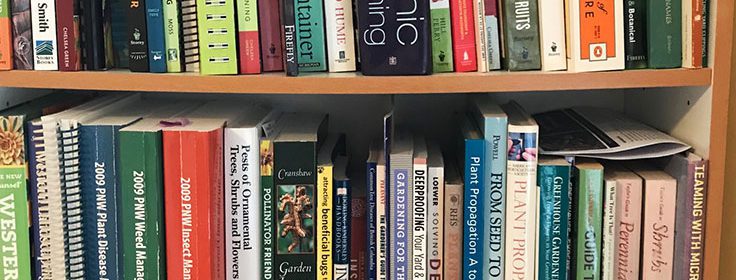Book Review: Cool Plants for Cold Climates

Cool Plants for Cold Climates: A Garden Designer’s Perspective by Brenda C. Adams (Snowy Owl Books/University of Alaska Press, 239 pp., $35)
I have found a book geared for those living in a colder climate. Especially those who have a tendency to let their heart govern their plant purchases! I’m sure you know what I mean because I often suffer from the same affliction. I see a plant that has an amazing flower and rationalize why it will grow in my garden. Unfortunately, not always with the greatest success. And I know I’m not alone.
Award-winning garden designer Brenda Adams can totally relate to this problem. She knows what it takes to pick knock-out plants that WILL succeed. After all, Adams gardens in Homer, Alaska, which just happens to be in USDA hardiness zone 3. She has wonderful suggestions for great plants that will grow in zones 2, 3, 4 and 5.
As she writes, “Northern gardens need not be uninteresting or fragile: cool — really cool — hardy plants are out there. My goal is to provide you and other cold-climate gardeners with enough information about a wide variety of exceptional plants so you will be able to create a gorgeous, gratifying, and dependably hardy garden, a garden filled with selections you adore.”
But as Adams knows, it’s not enough to just be aware of hardy plants. She explains how to evaluate plants for their desirable qualities so they will meet your goals and expectations.
(note: that amazing yellow flower is pictured above right, that’s a Trollius or globeflower called ‘Lemon Queen’. They grow really well in Alaska. I remembered taking pictures of them while up there a few years back so wanted to include it! The photo on the cover of the book is an Astrantia or Masterwort.)
Cool Plants for Cold Climates: section 1
In section one, “Evaluating Plants for Their Garden Impact,” the author suggests that the first thing we should look at is what the plant will do for your garden setting. Perhaps it’s the foliage or the flowers (and she mentions how planting in masses makes a bigger impact). Maybe the bark on a tree or the color of the plant stems, or perhaps seed pods, berries or fruits will make it worthwhile to have. Or think about plants that add movement to the garden, such as ornamental grasses.
Fragrance also has a huge impact on visitors to the garden. Consider choosing plants that have the potential to evoke a memory.
Cool Plants for Cold Climates: section 2
In section two, “Evaluating Plants for Their Utility and Dependability,” Adams discusses how we gardeners sometimes have a difficult time looking beyond their initial reaction to a plant. We just know a flower is gorgeous, for example, but what else will that plant do for your garden and you?
She suggests thinking about the amount of care a plant will need or how large it will grow. As we all know, cold climates have a short growing season. How can you get around that when evaluating a plant? Will it extend the season by offering fall colors or bloom very early in the season? Will it add structure or interest to the landscape throughout the winter?
Cool Plants for Cold Climates: section 3
Section three, “Determining Whether a Plant Will Thrive in Your Garden,” will be of particular importance to the reader because the author covers how we should look at the environment in our garden and think about what we can do to help plants thrive in it. The former involves looking at light, soil, exposure to the elements as well as the more sheltered areas.
Cool Plants for Cold Climates: section 4
In section four, “At The Nursery,” Adams details what to look for at a nursery to know you’re dealing with a good source for healthy plants. She emphasizes the importance of inspecting plants prior to purchasing them and selecting good plants to get them off to a good start.
Cool Plants for Cold Climates: section 5
The final section, “Cool Plants for Cold Climates,” is divided into suggested annuals, bulbs, grasses, herbaceous perennials, shrubs, trees, and vines.
The author provides each plant’s light, soil and moisture requirements, as well as when they’re at their peak during the season, height and width, hardiness zones, and why she recommends it.
The book includes a glossary of terms along with the sources Adams consulted in order to allow the reader further research opportunities.
I have to admit that while reading this book, my mind was excitedly thinking of — and looking for — ideas of wonderful, well-suited plants to add to my garden!
Cool Plants for Cold Climates is an excellent resource that enables gardeners living in challenging climates to make informed selections and be delighted with the results.


